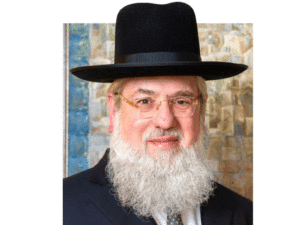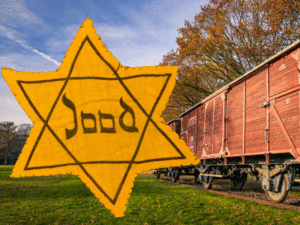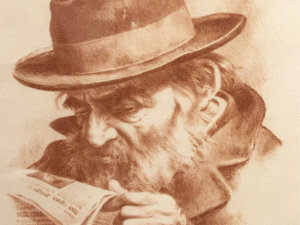Do you look forward to tax season? If you are an accountant, you probably do. It is hard work, sometimes going into the wee hours of the morning, but it pays its dividends. If you’re expecting a hefty tax return, then you are happy with it as well, anticipating what you will do with the extra cash. But if you are in neither of the aforementioned categories, you’re not very enamored of tax day. You dread hearing how much you owe the government and resent giving up your hard-earned money. You have to be in a state of ad delo yoda to be happy with the assessment of taxes. Yet, that is exactly what we find in the Megillah.
After we are told the incredible tale of Purim, with its various turns of events that led to the hanging of the wicked Haman and his 10 sons and the establishing of Purim as a Yom Tov, we read something that seems inconsequential. “And King Achashverosh levied taxes on both the mainland and the islands.” We know that the Megillah was written with ruach hakodesh, and if so, this assessment of taxes is something of significance. Its placement at the end of the story as sort of a climax is also interesting. Why is this of such key importance?
Let’s see what the Targum Sheini says on this posuk: “When Achashveirosh found out the nation of Esther and her birthplace, he granted the Jews freedom throughout the entire world. He subjugated all of the nations and all of the kingdoms to the Yidden and imposed a tax on the mainland and the islands.” Imagine that. Just a short while before, the Jews were at the point of despair and there was an open license to kill them. Now, venahafoch hu. They were granted a higher status and all of the other nationalities were subordinate to them.
But what does this have to do with the taxes? Rav Elisha Gallico explains that originally, when ascending the throne, Achashveirosh’s power was challenged and he lost dominion over many of the countries. But now, after the miracle of Purim, all of those lands, even the far-out islands, were returned to his sovereignty. This elevated the status of Yisroel in the eyes of the nations, because they all recognized that it was because of his association with the Yidden that he regained his lost authority.
The Brisker Rov explains that with the entire story of the execution of Haman and his sons who were ministers in the kingdom and the Jews killing the masses of people who were their enemies, there should have been a backlash nationally and a widespread rebellion against the king, with revenge taken against the Jews throughout the lands. But, in fact, miraculously, the opposite was true. The king’s power was solidified to the extent that he was able to impose more taxes. This was part of the neis of Purim and that is why it is mentioned in the Megillah.
It’s hard for us to envision what it was like at the height of the simcha. Today, in golus, in a progressive democracy like America, anti-Semitism is on the rise, with an increase of violence against us. Even in the State of Israel, which claims to be the security blanket for all Jews, you find Arabs in the Knesset who hate Jews with a passion and sympathize with terrorists, laughing all the way to the bank as they cash their checks provided by the government they so loath. And they are allowed to remain there by imbecilic members of the Israeli Supreme Court.
The Yom Tov of Purim was a unique celebration, as the Yidden were raised on a high pedestal. It was clear for all to see that they were the Chosen Nation. The seforim say that the yeshuah of Purim and its festival are portents of the arrival of Moshiach. During the days of the year, it is forbidden to fill your mouth with laughter (Brachos 31a), yet on Purim, there are poskim who permit it. This day contains a bit of the spirit of the days of Moshiach, about which it says, “Then our mouths will be filled with laughter” (Tehillim 126:2). It was a time when we were victorious over Amaleik, and in the future, when he is totally eradicated, the world will be filled with simcha.
But there is another, more hidden, connection between the “mas,” the tax of Achashveirosh, and the yeshuah of Purim. When Queen Esther first heard that Mordechai went out into the midst of the city donning sackcloth and ashes and crying out bitterly, she sent garments to clothe him, but he would not accept them. She then summoned Hasach and ordered him to go to Mordechai to learn “mah zeh v’al mah zeh, what this was and why” (Esther 4:5). This expression of Esther is a curious one and has an implicit meaning.
The Medrash tells us that Esther was asking, “Perhaps the Yidden violated the mitzvos of the Torah about which it says ‘mizeh umizeh heim kesuvim – they (the Luchos) were inscribed on one side and the other’” (Shemos 32:15), engraved through and through. Why would Esther articulate their transgressions in this particular manner? And if the writing would only be on one side, would that lighten the severity of their transgressions?
The Be’er Yosef, Rav Yosef Salant, explains that the Jews of that generation were mistaken in thinking that they could be lenient in some aspects of the Torah. They rationalized that since they were in golus, surrounded by the goyim and subjects of a foreign king, it was impossible to keep the Torah in its entirety and therefore they could be lax with some of its mitzvos.
When they were invited to the feast of Achashveirosh, they reasoned, “How can we not participate? Our absence will be an open demonstration to the king and to the other nations that we want to remain a nation apart, unfriendly to the goyim. This will arouse their hatred of our people and we won’t be able to survive in the golus.” For this reason, when Mordechai declared that they should not attend the feast, they did not listen to him. But this was a grave misconception in not realizing the supremacy of Torah, that it transcends time and place and is applicable everywhere. What’s more, it is not merely a code of laws that we must abide by. Rather, it is part and parcel of every Jew, the very essence of a Yid. “Yisroel and the Torah and Hakadosh Boruch Hu are one.” This bond remains intact no matter where we are, and it is not in our power to change this. When we try to, we are sent signs min hashomayim to recalculate our ways.
This is what Esther meant when she inquired if perhaps the Yidden violated the Torah, which is written from both sides. The reason the writing on the Luchos was engraved through and through and not merely on the outside is to show that the Torah is eternal. Unlike ink that can be erased or the engraving of a seal that can get worn down with the passing of time, the letters of the Torah that pierced the stone from one side to the other do not change, no matter the time or place. The queen knew that Yidden would not openly transgress the mitzvos, but she suspected that they had forgotten this hashkafah that we cannot loosen our bonds with Hashem and the Torah no matter where we are.
As far as their worry about how they could survive in golus while being so different from their neighbors, to the contrary: This is the secret of their endurance. Their bond with Hashem and the Torah elevates them to being a supernatural people who merit a special Hashgocha from Heaven. This is also alluded to by the writing that went through and through. We know that “the mem and the samach of the Luchos stood miraculously” (Shabbos 104a). Because the writing went through and through, the centers of these letters were detached from the stone, yet they remained intact miraculously. Similarly, Klal Yisroel, by keeping the Torah, although they remained isolated from the goyim, survived supernaturally and often even flourished in the golus.
The tax that Achashveirosh levied on his subjects was only possible because of the Yidden. The word mas, tax, is comprised of the same letters that were miraculously set in the Luchos. These letters attest to the phenomenal survival of Jews when they keep the Torah and their special status among the nations.
There is yet another lesson to be derived from this tax of Achashveirosh. The story in the Megillah took place over a span of about 13 years. During this period, there were major upheavals taking place in Shushan. After the gala feast held by the king that lasted for 180 days and then another one for seven, in a fit of rage, Achashveirosh had Queen Vashti killed. He quickly regretted this decision, but he could not bring her back. For four years, he searched for a proper replacement, and after much turmoil he finally found Esther and crowned her as his queen. Soon after, she saved him from an assassination attempt by Bigsan and Seresh.
Shortly after that, Haman rose to power and successfully passed the decree to destroy, to slay, and to exterminate all of the Jews. Just a short while later and…venahafoch hu. The decree was annulled, the Yidden killed their enemies, and Haman and his sons were hanged. Haman had 280 sons, many of them officials in the government, and they were all killed. Achashveirosh “cleaned the swamp” and many members of his administration were dismissed and replaced by others. Now who became his chief of staff? None other than Mordechai HaYehudi.
So many changes, so many earth-shattering events, so many lessons to be learned. For the Yidden, there was an awakening to teshuvah that all of the 48 prophets could not bring them to. There was also a reaffirming of their Kabbolas HaTorah at Har Sinai. Many among the people of the land became geirim. And what did Achashveirosh, one of the protagonists of this story, come away with? Did he become a Jew? Did he take the miracle to heart and change his ways for the better? Not at all. The Megillah tells us what he took from all of this. He levied a tax on his citizens and added money to his treasury. That’s all. And he died shortly after the miracle of Purim, leaving all of the money behind.
At the end of the Megillah, Mordechai and Esther recorded this tax in order to call out to us, “Don’t repeat the mistake of Achashveirosh,” or, as Rav Mordechai Druk, said, “Don’t be an Achashveirosh Junior!” Purim is a day laden with kedusha. As mentioned before, it has in it the spirit of the days of Moshiach. It is a day mesugal for our tefillos to be answered. It is a day of Kabbolas HaTorah, of ahavas Yisroel, and a day of performing special mitzvos. Don’t become preoccupied with the externals of the day and forget about its real treasures. Try and absorb every bit of kedusha that it entails (Rav Goel Alkarif).
In this merit, may we be zoche to true simcha the entire year and to rejoice in the coming of Moshiach, bimeheirah beyomeinu. Ah freilichen Purim.








